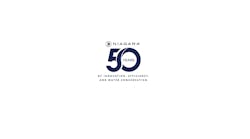Palo Alto, Calif. — Emphasis on LEED certification and incorporation of energy efficiency measures increasingly characterize the building sector in North America, reported consulting firm Frost & Sullivan. The building sector is witnessing a significant shift toward “greening” and sustainability.
To reduce resource dependency and carbon footprint, the building industry attempts to reduce energy and operating costs while trying to enhance asset value over time. The market trend reflects a direct correlation to the burgeoning importance of green buildings in North America, according to the consulting firm. Nearly all vertical segments within the green building products and services market offer environmentally sustainable alternatives today with positive end-user interest and account for a sizable portion of the market, Frost & Sullivan said in its report.
“A significant challenge for market participants is the cost hurdle that frequently dampens end-user interest,” says Frost & Sullivan Research Analyst Konkana Khaund. “However, as the level of competitiveness increases with more options surfacing in the market, price is expected to experience downward pressure, eventually allowing for their better market penetration.”
New research from Frost & Sullivan (www.buildingtechnologies.frost.com), “LEED and Beyond: Evolving Trends in Green & Intelligent Buildings in North America,” finds that the market earned revenues of over $12 billion in 2007 and estimates to reach $42.6 billion in 2015.
Half of the total energy consumed in the U.S. is by commercial, institutional or industrial buildings, and any increase in energy price is set to have a dramatic effect on the operating cost of these sectors. As such, new building projects must consider ways to lower bills through the efficient use of water, heat and electricity. This is where the adoption of LEED standards for environmentally sustainable design and performance, developed by the U.S. Green Building Council, can help.
One obstacle to LEED adoption, however, is the high cost of certification, which can include data collection, administrative and commissioning costs. Expenses can reach up to $60,000, a prohibitive amount for many small- to medium-sized projects. Added to this, is the number of different rating systems within LEED itself.
In addition, differing outlooks on climate change and energy supply confuse market perceptions and lead to the idea that green buildings are a fashion, not a confirmed market poised for significant expansion. To counter this, industry awareness of the benefits of high-performance green buildings is critical. The maturity attained by the North American construction industry makes it imperative for participants to explore ways of adding valuable differentiators to their projects.
“LEED and Beyond: Evolving Trends in Green & Intelligent Buildings in North America” is part of the firm's Building Management Technologies Growth Partnership Service program, which also includes research in North American Energy Recovery Ventilation Markets, North American Building Automation Systems Market, North American Markets for Integration of Building Security Systems with BAS and North American Zone Control Systems Markets.

